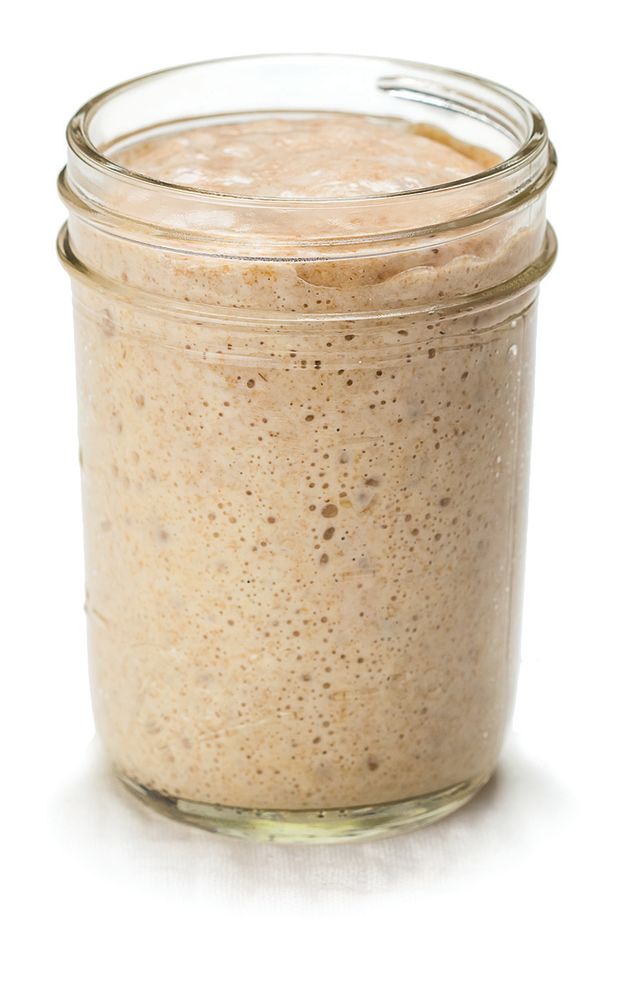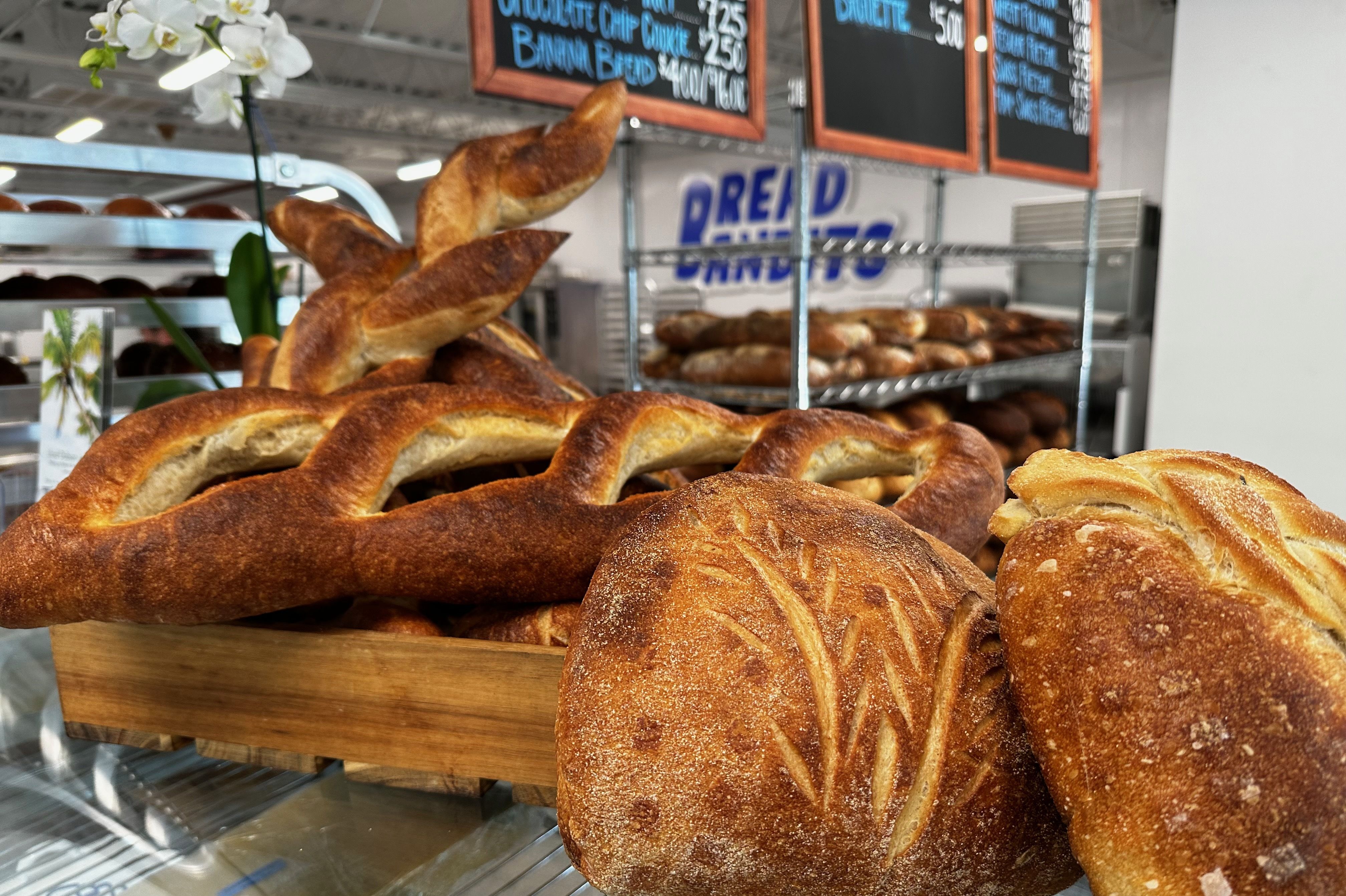How to Grow Your Own Sourdough Starter

You, too, can grow your own sourdough starter.
Image: Shutterstock
“It’s alive!”
I cackle and quote from Frankenstein as I look into the glass jar that’s the incubator for my sourdough starter. What began as a paste of all-purpose flour, whole-grain flour and warm tap water has transformed overnight. Small bubbles pock the surface of the tan concoction. Little specks of air are visible from the sides. With a big inhale, I catch a funky whiff, part grain, part beer, part sock.
Like all growing critters, my starter is hungry. I dispose of most of it, add more flour and water and set it back on the counter, uncovered. For now, the beast is subdued.
What exactly is happening in that jar? Wild yeasts and bacteria—some from the flour, some from my hands, some from the fresh air wafting in from my open kitchen window—are slowly nibbling away at the sugars in the flour, expelling the carbon dioxide that makes those little bubbles pop and that, I hope, will give my finished sourdough loaf a soft, spongy crumb.
I’m following the regimen laid out in Michael Pollan’s Cooked: A Natural History of Transformation, which traces the making of sourdough back 6,000 years to the ancient Egyptians. I follow Pollan on Twitter, and after his book came out, I started noticing photos of sourdough loaves pop up in my feed. Pollan was reposting images of bread made with his recipe that were sent to him by fans, and they looked incredible.
But here’s the rub. I’m a great cook. I can braise, I can hand-crank fresh pappardelle, I can make a killer cast-iron cheeseburger. But baking my own bread? Too scientific. Too technical. If it requires a digital scale, count me out. But then I’d open Twitter and there would be another loaf. The exteriors were dark brown, almost burnt in spots; the interiors were shot through with irregular holes ranging in size from pebbles to golf balls. I could just picture myself slicing a big wedge, slathering it with butter… I needed to try this.
The cool thing about growing your own starter is that it’s one-of-a-kind. The flavor that’s developing in the glass jar on my counter depends on the specific yeasts and bacteria that happen to live in my kitchen or float around my front yard as well as variables like how often I feed it.
Pollan suggests it can take up to a week to get your starter going, but mine is thriving after just a couple days. My wife wonders if the results of my tinkering will be safe to consume, but I’ve come this far. There’s no going back. The night before I bake, I transfer some of my starter to a bowl with more flour and water to make what’s called a leaven, and then I soak the flour that will make up the main loaves. In the morning, nothing looks right. The dough is too squishy; it looks like it hasn’t risen enough. Perhaps I should have bought that digital scale rather than try to translate grams to ounces?
But I forge ahead. And the result is a triumph, bread with an ultra-crunchy exterior, a dense but tender crumb and a sour flavor that can only have been born in my home. My wife joins me in devouring half a loaf right out of the oven.
Starters can theoretically live forever, as long as they’re fed and loved. Some are handed down through generations. When I began, I wasn’t sure if my critter would survive his first bake. Would it be worth preserving? But after my first bite, I know I can’t abandon it. I mix up a little flour paste and add it to the jar. It shall live.



